How Pallet Inverters Solve Lower Downtime in Agri-Export Processing Plants in Argentina?
Are you running an agri-export processing plant in Argentina? Then you know the pressure. Every minute your line is stopped feels like an eternity. You see perfectly good produce waiting, shipping deadlines looming, and profits slipping away. The causes are often small but frustrating: a broken pallet, a spill on the warehouse floor, or the slow, manual process of switching from wooden pallets to export-grade plastic ones. These seemingly minor issues add up, creating significant downtime that hurts your bottom line and your reputation with international buyers.
A pallet inverter directly solves downtime in Argentinean agri-export plants by automating the process of switching or replacing pallets. This machine can lift and rotate a full load, allowing a single operator to swap a broken or non-compliant pallet in under a minute. This drastically reduces the hours lost to manual de-stacking and re-stacking, minimizes product damage during handling, and ensures a continuous flow of goods, directly boosting operational uptime.
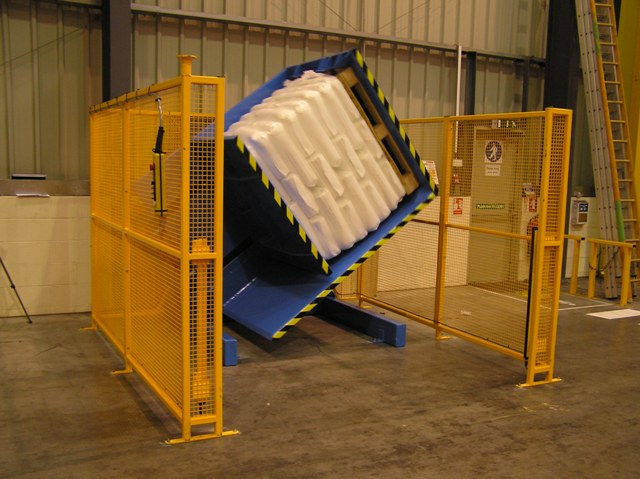
I've spent my entire career in the industrial machinery world, first as an engineer and now as a factory owner. I've walked through countless plants, from steel mills to food processors. The problems may look different on the surface—steel coils versus crates of apples—but the core challenge is always the same: keeping the production line moving. Downtime is the enemy of profit, no matter what you produce. Let's take a closer look at how this specific piece of equipment, the pallet inverter, tackles this universal problem within the unique context of Argentina's demanding agri-export sector.
What specific operational bottlenecks do pallet inverters eliminate in Argentinean fruit packing lines?
Your packing line is running smoothly. Suddenly, a forklift driver notices a cracked wooden pallet under a full stack of freshly packed lemons destined for Europe. The entire load has to be pulled aside. Two workers then spend the next 30 minutes manually unstacking every single box, placing them on a new, clean plastic pallet, and then restacking them. During this time, the wrapping machine is idle, the loading dock is waiting, and you are losing money. This single, common bottleneck can cause a chain reaction of delays.
A pallet inverter eliminates these specific bottlenecks by providing a fast, mechanical solution for pallet exchange. It secures the entire load, rotates it, and allows the faulty or incorrect pallet to be removed and replaced in a fraction of the time. This is especially critical in Argentinean fruit packing, where you need to switch from in-house wooden pallets to sterile, ISPM 15-compliant export pallets. The inverter removes the manual labor, the risk of product damage from re-handling, and the time waste, turning a 30-minute bottleneck into a 60-second task.
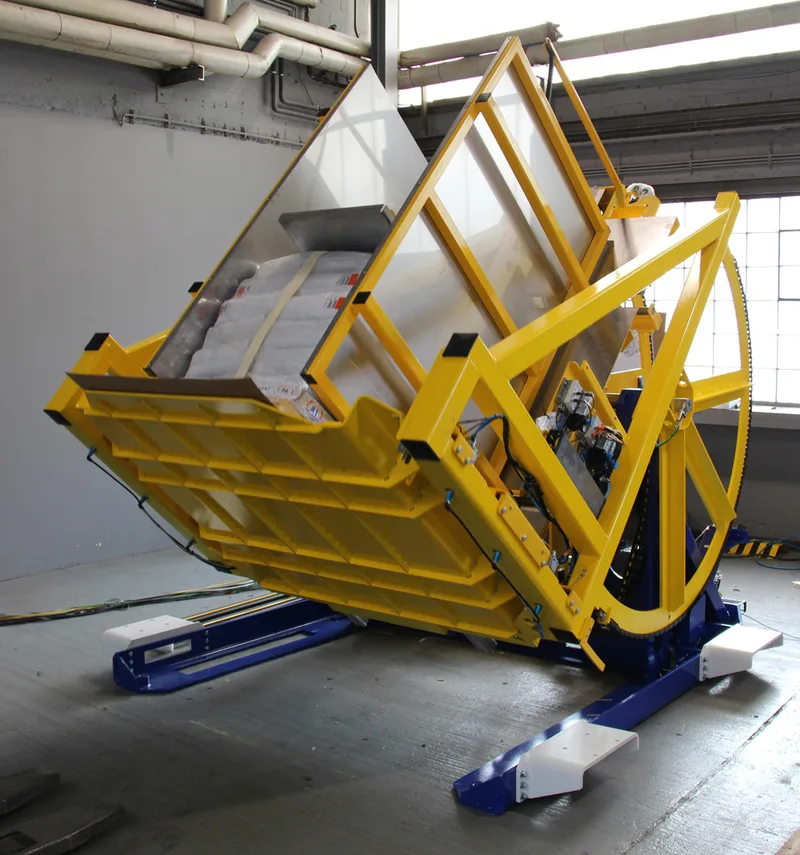
Breaking Down the Bottlenecks
In my experience, efficiency gains come from identifying and solving very specific, often overlooked, problems. In the context of an Argentinean fruit packing line, a pallet inverter isn't just a convenience; it's a direct solution to three major operational headaches.
Bottleneck 1: The Export Pallet Swap
International shipping regulations, particularly for food items, are strict. Many destination countries require products to be on plastic or specially treated pallets to prevent pests and contamination. This means every single pallet of fruit leaving your plant for export must be switched from your standard, internal-use wooden pallets.
- The Manual Method: This process is a huge time sink. It requires workers to physically lift and move every box. This is slow, labor-intensive, and introduces a high risk of dropping boxes, bruising fruit, and causing spoilage. A single pallet can take two workers anywhere from 15 to 30 minutes.
- The Inverter Solution: The pallet inverter automates this entire process. A forklift places the loaded wooden pallet into the machine. The inverter clamps the load securely, rotates it 180 degrees, and rests it on its top. The wooden pallet is now on top, easily removed by the forklift. The new, clean export pallet is placed on the load, and the machine rotates it back. The entire cycle is completed by one operator in about one minute.
Bottleneck 2: Damaged Goods Recovery
What happens when the bottom layer of boxes on a pallet gets crushed or wet? Without an inverter, you have two bad choices. You can either write off the entire pallet as a loss, which is incredibly wasteful, or you can manually unstack the entire load just to replace a few boxes at the bottom.
- The Inverter Solution: The pallet inverter makes this a simple fix. You invert the load, remove the pallet, and now the damaged boxes are sitting right on top. You can easily remove and replace them without disturbing the rest of the stack. This turns a potential total loss into a minor, quickly-resolved issue, saving both product and time.
Bottleneck 3: Order Consolidation and Fulfillment
Sometimes you need to split a full pallet to fulfill a smaller order or combine goods from two different pallets. Manually, this is messy and slow. The pallet inverter can be used to safely tilt a load to a 90-degree angle, making it easy and safe for an operator to slide off a specific number of layers without having to unstack the whole thing.
Here is a simple breakdown of the impact:
| Operational Bottleneck | Manual Handling Process (per pallet) | Pallet Inverter Process (per pallet) | Downtime Reduction |
|---|---|---|---|
| Export Pallet Swap | 2 workers, 20-30 minutes | 1 operator, 1-2 minutes | > 90% |
| Damaged Goods Recovery | 2 workers, 15-25 minutes | 1 operator, 2-3 minutes | > 85% |
| Order Picking/Splitting | 1 worker, 10-15 minutes (high risk) | 1 operator, 2-4 minutes (low risk) | > 70% |
By addressing these very precise points of failure in the workflow, the pallet inverter doesn't just speed things up; it removes entire categories of downtime from your daily operations.
How does reducing manual handling with pallet inverters directly impact equipment uptime and worker safety?
You invest heavily in high-speed wrapping machines and automated conveyors to maximize throughput. But what happens when a worker strains their back while re-stacking a pallet? The entire line stops. Not just because you are one person short, but because there's an incident report to file, a safety review, and a tangible hit to team morale. The uptime of your expensive machinery is directly tied to the well-being of the people operating it. The physical strain of manual handling is a hidden cost that leads to unpredictable, and often lengthy, production stoppages.
Reducing manual handling with a pallet inverter directly boosts uptime by tackling the human element of downtime. First, it virtually eliminates the risk of musculoskeletal injuries associated with lifting heavy boxes, which are a leading cause of unscheduled worker absences and production halts. Second, it prevents the product spills and damage that occur during manual re-stacking, incidents that require the line to be stopped for cleanup and recovery. By creating a safer and more ergonomic work environment, you ensure your team can operate consistently, keeping your machines running and meeting your production targets.
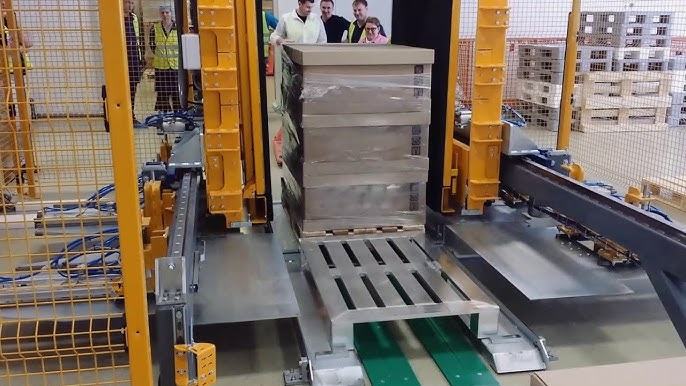
The Connection Between People, Safety, and Uptime
When I was starting out as an engineer, I used to think of uptime purely in mechanical terms: machine speed, failure rates, and maintenance schedules. But as I moved on to manage a factory, I learned a crucial lesson: your equipment is only as reliable as the people operating it. A system that over-stresses your workers is a system designed for failure. This is where ergonomics and safety stop being a compliance issue and start being a core business strategy, especially for uptime.
The True Cost of a Workplace Injury
A single back injury from lifting is never just a single event. It has a ripple effect that spreads through the entire operation.
- Immediate Downtime: The line stops. The injured worker needs attention. The area might need to be cordoned off.
- Administrative Downtime: A supervisor has to stop their work to manage the situation, file reports, and potentially reorganize the team. This pulls key personnel away from value-adding activities.
- Reduced Productivity: The remaining team members may be shaken, and the replacement worker might not be as experienced or efficient at that specific task, slowing down the entire line for the rest of the shift.
- Financial Costs: Beyond the obvious medical and insurance costs, there are costs associated with lost production, potential regulatory fines, and increased insurance premiums in the long run.
A pallet inverter removes the primary cause of these incidents: the repetitive, heavy lifting involved in manual pallet handling. It transforms a high-risk task into a low-risk, machine-assisted process.
Ergonomics as a Performance Multiplier
A tired worker is an inefficient and unsafe worker. Manual re-stacking is physically draining. As fatigue sets in during a shift, the risk of mistakes increases. Boxes get dropped, pallets are stacked unevenly, and the pace slows down. This "human factor" degradation directly impacts your line's overall equipment effectiveness (OEE).
By introducing a pallet inverter, you are not just making the job safer; you are making it less physically demanding. Workers can maintain a consistent level of performance throughout their shift because they are not being worn down by strenuous labor. They can focus on quality control and operating the machinery, rather than just brute force.
| Factor | Manual Pallet Handling | Handling with a Pallet Inverter | Impact on Uptime |
|---|---|---|---|
| Physical Strain | High (repetitive bending, lifting) | Very Low (push-button operation) | Reduces fatigue-related errors and slowdowns. |
| Injury Risk | High (back, shoulder, wrist injuries) | Minimal (designed with safety guards) | Prevents injury-related production stoppages. |
| Process Consistency | Low (depends on worker speed/stamina) | High (consistent cycle time, every time) | Creates a predictable, reliable workflow. |
| Worker Focus | On physical labor and avoiding injury | On process monitoring and quality | Improves overall operational control. |
In the end, investing in a pallet inverter is as much an investment in your people as it is in a piece of steel. A safe, less-stressed workforce is a more productive and reliable workforce. And that reliability is the foundation of achieving high equipment uptime.
Can the ROI of a pallet inverter be justified in a market with fluctuating export demands like Argentina's?
As a business owner, I understand the hesitation. You look at a piece of equipment like a pallet inverter and see a significant capital expense. Then you look at the Argentinean export market, with its seasonal peaks for fruits like lemons and cherries and its unpredictable demand shifts, and you ask a tough question: "Will this machine pay for itself, or will it sit idle for half the year, collecting dust and depreciating?" It's a valid concern. Making a large investment in an industry known for its ups and downs requires absolute certainty of a strong return.
Yes, the ROI for a pallet inverter is not only justified but is often stronger in a volatile market like Argentina's. The justification comes from its ability to generate savings and efficiencies that are critical during both peak and off-peak seasons. During high-demand periods, its speed and efficiency allow you to maximize throughput and capture every possible sale. During slower periods, the savings from drastically reduced product-loss and lower labor costs help protect your profit margins when every peso counts. It's an investment in operational resilience, not just peak capacity.
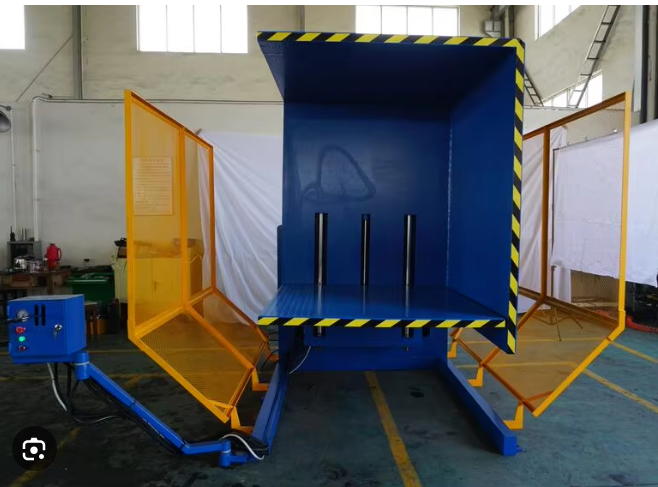
Calculating the Return Beyond the Peak Season
Every factory owner, whether in steel or agri-export, must be a master of cost-benefit analysis. For a machine like a pallet inverter, the calculation goes deeper than just "how many more pallets can I process per hour?". In a market with fluctuating demand, the true value lies in cost reduction and operational flexibility. Let's break down how to calculate the ROI in a way that makes sense for the Argentinean market.
Tangible, Year-Round Savings
These are the hard numbers you can take to the bank, regardless of whether you're in a frantic peak season or a slower period.
- Reduced Labor Costs: This is the most straightforward calculation. A pallet inverter allows one operator to do the work of two or three manual handlers. Calculate the annual wages, benefits, and associated costs for the workers you can re-assign to more valuable tasks. This saving exists every single day the plant is operational.
- Eliminated Product Loss: Track how much product you currently lose due to damage during manual re-stacking. Assign a conservative monetary value to this spoilage. A pallet inverter can reduce this loss by over 90%. This saving is directly proportional to your production volume. Even during slow seasons, preventing the loss of even a few pallets a week adds up.
- Lower Pallet Costs: Many plants use cheaper, less durable pallets for internal movement and switch to expensive, compliant pallets for export. This constant manual handling damages both types of pallets, increasing your replacement costs. The gentle, controlled motion of an inverter extends the life of your entire pallet inventory.
The Value of Peak-Season Throughput
This is where the investment truly shines. In the short, intense harvest seasons for many Argentinean fruits, the ability to process more, faster, is everything.
- Increased Shipping Capacity: If a pallet inverter saves you 20 minutes per pallet swap, and you swap 50 pallets a day during peak season, that's over 16 hours of labor time saved every day. More importantly, it means 50 pallets are ready for shipment faster. This can be the difference between filling an extra truck, meeting a tight shipping deadline, or accepting a last-minute order. Calculate the profit from just one extra container shipment that you can now fulfill. Often, this alone can justify a large portion of the investment.
ROI Calculation Example
Let's imagine a mid-sized plant in Tucumán exporting lemons.
| Cost/Saving Category | Calculation Details | Estimated Annual Value (USD) |
|---|---|---|
| Initial Investment | Pallet Inverter Cost (incl. installation) | - $30,000 |
| Labor Savings | 1.5 workers x $12,000/year (salary + benefits) | + $18,000 |
| Product Spoilage Reduction | 2 pallets/week x 40 weeks x $200/pallet value | + $16,000 |
| Increased Peak Throughput | 2 extra shipments/season x $5,000 profit/shipment | + $10,000 |
| Reduced Pallet Damage | Reduced replacement costs | + $1,000 |
| Total Annual Return | Sum of all savings and gains | + $45,000 |
| Payback Period | Investment / Annual Return | ~ 8 months |
Even with conservative estimates, the payback period is often less than a year. In a volatile market, an investment that pays for itself this quickly isn't a risk; it's a competitive advantage. It makes your operation leaner and more robust, ready to profit in the good times and resilient enough to weather the bad.
What are the key integration challenges when introducing a pallet inverter into an existing processing plant?
You've done the math, and the ROI for a pallet inverter looks great. You sign the purchase order. But then the machine arrives, and reality hits. The space you allocated is too tight for the forklift to maneuver properly. Your existing conveyor belts are at the wrong height. Your team, used to doing things the old way, sees it as a complicated new gadget rather than a helpful tool. The promise of reduced downtime can quickly be eaten up by the downtime caused by a poorly planned integration.
The key integration challenges when introducing a pallet inverter are primarily logistical and human. The first challenge is physical integration: ensuring you have adequate floor space, proper foundation support, and seamless alignment with existing material flow like conveyors and forklift paths. The second is workflow integration: redesigning the process steps to incorporate the inverter without creating new bottlenecks. The final, and most critical, challenge is human integration: providing thorough operator training and demonstrating the machine's benefits to ensure team buy-in and proper use.
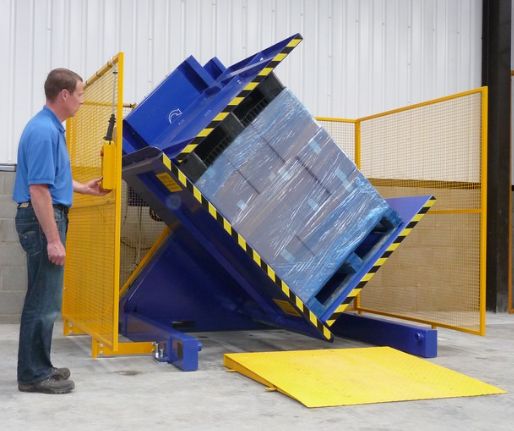
A Practical Guide to Smooth Integration
From my own experience establishing a factory, I can tell you that buying the right machine is only half the battle. The other half is making it work seamlessly within your existing system. A successful integration requires careful planning before the machine even leaves the supplier's factory. A strategic partner doesn't just sell you a machine; they help you plan its arrival and implementation.
Phase 1: Pre-Purchase Planning and Layout
This is the most critical phase. Getting this right prevents 90% of integration headaches.
- Space Audit: Don't just measure the machine's footprint. You need to map out the entire operational envelope. This includes the space for a forklift to approach, align, and back away safely. You also need vertical clearance for the full rotation cycle. A good supplier should provide detailed layout drawings.
- Floor Loading: A pallet inverter, especially when handling a heavy load, exerts significant force on the floor. You must verify that the concrete slab in the chosen location can handle the specified point loading. This might require a quick consultation with a structural engineer.
- Power and Utilities: Confirm the machine's power requirements (voltage, phase, amperage) and ensure you have an appropriate electrical drop nearby. Some models might also require compressed air.
- Workflow Mapping: Draw a simple "before" and "after" process map. Where do pallets come from? Where do they go after being inverted? The goal is to place the inverter along the most logical path to avoid creating extra travel distance for your forklifts.
Phase 2: Installation and Commissioning
This is where planning turns into reality.
- Minimize Disruption: Schedule the installation during a planned shutdown or a slower period if possible. A clear, well-prepared site means the installation team can work faster and more efficiently.
- Test with Real Loads: Once the machine is installed, don't just test it empty. Run it with the actual types of products and pallets you use. Test the heaviest loads, the most unstable loads, and different pallet types. This is where you fine-tune the clamping pressure and cycle speed.
Phase 3: Training and Adoption
A machine is useless if your team doesn't use it, or uses it incorrectly.
- Train the Trainer: Identify a few key operators or a shift supervisor to receive in-depth training from the supplier. They will become your internal experts who can then train others.
- Focus on the "Why": Don't just show them which buttons to push. Explain why the machine is there. Show them how it makes their job easier and safer. When they understand the benefit to them personally (less back-breaking work), adoption will be much faster.
- Create Simple Work Instructions: Laminate a one-page guide with clear pictures and simple steps and post it right on the machine. This helps new operators and serves as a quick reminder for everyone.
Here’s a checklist to guide the process:
| Stage | Key Action | Success Metric |
|---|---|---|
| Planning | Conduct a full site survey (space, power, floor). | Detailed layout is approved and signed off. |
| Map the new material workflow. | Workflow map shows no new bottlenecks. | |
| Installation | Schedule installation to minimize production loss. | Installation completed within the planned timeframe. |
| Test machine with a variety of actual product loads. | Machine operates correctly under all test conditions. | |
| Training | In-depth training for key operators by the supplier. | Trained operators can run the machine without assistance. |
| Communicate benefits of the new system to all staff. | Team uses the machine consistently and correctly. |
A thoughtful integration plan turns a capital expenditure into a true operational asset from day one.
My Insights: Beyond the Machine - A Strategic View on Downtime Reduction
I started my career on the factory floor as an engineer. I saw firsthand how a single, recurring problem could frustrate an entire team and sabotage production goals. Later, when I built my own factory, I carried that lesson with me. I achieved my own success, and helped my clients succeed, not by focusing on the biggest, most expensive machines, but by obsessively hunting down and solving these "small" points of friction.
This is my core belief: You don't achieve 95% uptime or an 8% cost reduction with one giant leap. You get there by fixing a hundred small problems. The story of the pallet inverter in an Argentinean agri-export plant is a perfect example of this philosophy. On the surface, it's about swapping pallets. But strategically, it's about something much bigger.
It's about identifying a specific, chronic bottleneck that bleeds time, money, and morale. It's about seeing your workers not as a cost, but as your most valuable asset, and realizing that their safety and well-being are directly linked to your productivity. It's about understanding that in a volatile market, resilience and efficiency are your best defense.
Whether you are handling fragile lemons in Argentina or heavy steel coils in Mexico, the principle is identical. A CEO like Javier Morales, who I've had the pleasure of knowing, understands this. He didn't transform his steel mill with a single magic bullet. He did it by implementing smart solutions like waste heat recovery and intelligent scheduling—each one targeting a specific inefficiency.
The pallet inverter is one of those smart solutions. It's not just a machine. It's a strategic tool.
- It’s a tool for de-risking your operation from worker injury.
- It’s a tool for protecting your revenue by eliminating product damage.
- It’s a tool for building resilience by making your processes lean and flexible.
My mission with SHJLPACK has always been to share this kind of knowledge. It's not just about selling equipment. It's about providing a "TOTAL SOLUTION". That means looking at your entire process, understanding your unique challenges, and helping you find the right tool—whether it's a wrapping machine or a pallet inverter—that solves a real problem and delivers a clear return. That is how you build a stronger, more profitable business.
Conclusion
Ultimately, a pallet inverter is more than a machine. It's a direct investment in uptime, safety, and efficiency that pays for itself by solving critical bottlenecks in your production line.




